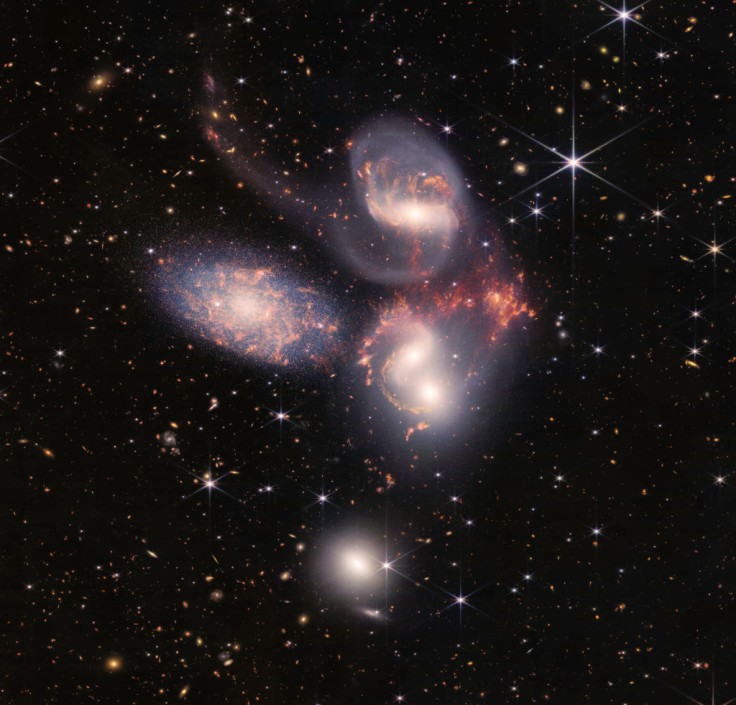
NASA's James Webb Space Telescope ventures to study the supermassive black hole.
The James Webb telescope will continue what the Hubble Space Telescope has discovered about the celestial-bodies found in space.
Now, the JWST ventures to gather more data to help discover the black holes in space.
Although the next-generation space observatory being developed by NASA is unable to directly observe supermassive black holes at this time, scientists are able to make use of the data it collects to gain a deeper understanding of these enigmatic space entities.
In spite of the fact that all observatories that gather light are unable to see supermassive black holes, the JWST will be able to view these structures in a roundabout way.
NASA Studying the Supermassive Black Hole
NASA 's recent image of the Stephan Quintet's five galaxies was captured by the James Webb Space Telescope.
Astronomers can detect a supermassive black hole, or perhaps, the light emitted by matter heating up and falling into the huge structure, which holds almost 24 million times the mass of the sun, in that photograph.
As reported by Space, John Mather, the senior program scientist for the James Webb Space Telescope, said that they are testing out the environment of a supermassive black hole.
Mather stated, "We now have images of the shape of the hydrogen cloud, iron cloud, atomic hydrogen cloud, molecular hydrogen, as they are orbiting around or trying to fall into the gravitational field of the black hole."
Mather mentioned that Hubble was the first to demonstrate unequivocally that black holes exist at the centers of galaxies, as they were able to detect the motion of stars revolving rapidly around a black hole.
Webb will continue to take that discovery further. Mather stated, "There is a giant black hole in the middle of every galaxy, and the origin of that black hole is completely unknown right now."
He added that he has high hopes that the discoveries made by JWST would educate astronomers regarding the origins of active galactic nuclei, which are the supermassive black holes that reside at the center of every galaxy.
NASA's James Webb Space Telescope
NASA's James Webb Space Telescope reveals Stephan's Quintet in a new light.
The holiday classic film "It's a Wonderful Life" popularized Stephan's Quintet, a visual cluster of five galaxies. Webb, on the other hand, was able to capture it, and it has easily become its largest photograph to date.
Webb's strong infrared vision and exceptionally high spatial resolution reveal previously unseen elements in this galaxy group.
According to NASA, Hickson Compact Group 92 (HCG 92) is another name for the collection of the five galaxies when taken together.
Only four of the galaxies can be considered to be relatively close to one another. The distance between the four galaxies and the fifth galaxy (NGC 7320), is slightly farther from the four galaxies.
The four galaxies which are named as NGC 7319, NGC 7318B, NGC 7318A, and NGC 7317are located approximately 290 million light-years from Earth, while the fifth galaxy is located 40 million light-years away from Earth.
Although it may seem very distant from Earth, these are still relatively close to this galaxy in comparison to others that are billions or even billions of light-years away.
The study of galaxies that are only a relatively short distance away like these helps scientists better understand phenomena that are considerably further away in the universe.
The data collected by Webb offers fresh perspectives on the ways in which interactions between galaxies may have influenced galaxy evolution in the early stages of the cosmos.









